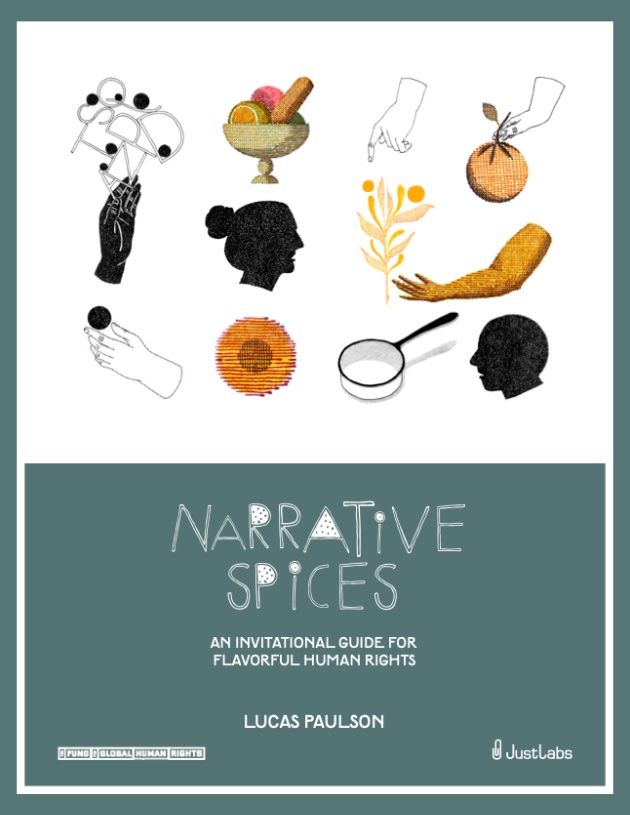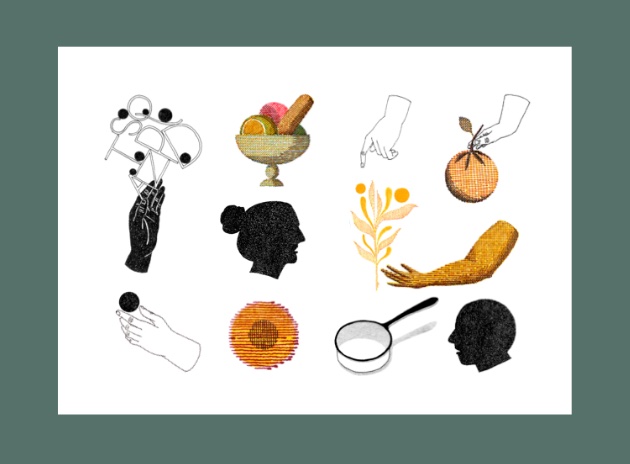“It not only changed me as a person, it also changed [our organization].” – Gerardo
“If we believe that the world can be different, then we also have to believe that our strategies can be different.” – Sofía
These words from two participants in the Narrative Hub, an experimental initiative by JustLabs and the Fund for Global Human Rights, capture the invitation at the heart of our recent publication Narrative spices: An invitational guide for flavorful human rights. Achieving “narrative change” out in the world, we argue, is not just a matter of defining better narrative recipes, but of nurturing the creativity and reflection of the cooks themselves.
What are narratives, and what do they have to do with human rights?
One way of thinking about narratives is in terms of how a story is told. In the world of human rights, this means thinking about how the story of human rights and social change is told—or more accurately, how such work is received and made sense of by people.
We live in a world where leaders consistently manipulate values and emotions to galvanize communities against movements, policies, and people that are striving for more compassion, care, and justice. In this context, the vocabularies of “narratives” and “narrative change” have become a touchpoint for many practitioners seeking to rethink how they work in an effort to transform the relationship that communities around the world have to human rights, justice, and social change.
How do we change narratives?
This is precisely the question our “guide” wants to question!
Conversations about “changing the narrative” as a tactic or a practice often focus on defining new narratives around which to shape communications and outreach (changing the literal stories we tell and how we tell them).
The Narrative Hub, on the other hand, was started with the idea that “what you do (not just what you say) is the narrative”. The initiative brought together funders and human rights organizations from around the world with the goal of running creative experiments that would bring new narratives to life.
Hear from the Narrative Hub teams!
One of the most important things we have learned, however, is just how easy it is for the goal of “changing narratives” to obscure (particularly for funders and accompaniers) the important personal and team growth that actually enables practitioners to be more creative, dynamic, and authentic at inviting change. Changing narratives is work that is as complex and formula-resistant as changing people. In the rush to adapt to the ways that narratives are weaponized against rights, we often chase better recipes—forgetting that the best food comes from creative, passionate, and inspired cooks.
The Spice Box
This is where the idea of “spices” comes in. By talking about spices (a brilliant metaphor from our colleague, Arpitha Kodiveri) we hope to resist the idea that there’s any one right way to change narratives. Instead, our “invitational guide” asks you to reflect on, play with, and mix up the flavors you usually use in human rights work—and to explore habits that enable curiosity, exploration, and growth. It invites us all to ask: what’s in my spice box for social change?
We offer six spice blends as an entry point (mixed from lessons and examples from the teams we supported along with ideas, wisdom, and research that has inspired us on our journey):
-
Problem Spaces – Shifting how we think about change
-
Creativity – A mindset and a habit
-
Visioning & Imagination – Exploring the dreams of your movements
-
Hope, Values, Emotions – Moving people and modeling change
-
Experiences & Relationships – Creating new, unexpected ground
-
People – Who’s it with, who’s it for?
For activists and practitioners, this is a call into play, experimentation, and reflection. You are the cooks! What spices are you currently using in your practice? What new blends could you explore?
For narrative practitioners, capacity-builders, and funders, this is a challenge to reflect on your own theory of change. How often are you outside the kitchen, calling for “new recipes?” How often are you investing in supporting the cooks to embrace their own culinary creativity and imagination?
Lessons for funding and accompaniment
Supporting narrative change may not always look like narrative work. Some of the most inspiring learning from the Narrative Hub came from small shifts in the teams’ practices. Supporting a long search process for an artistic partner or experimenting with hosting community upcycling workshops may not have “moved the needle” on public opinion for our teams, but they were hugely important learning experiences that helped teams build confidence exploring their own creativity and thinking more expansively about how they work.
We need humility, flexibility, and relationality in funding and accompaniment. Our accompaniment process was transformed when we let go of the pressure to “change the narrative,” and instead started paying attention to the journeys that the people we were working with were on—how they were growing and challenging themselves, and what they needed to keep going.
Reflecting on the process, the practitioners we supported consistently identified how unusual it was for them to have so much space to explore. We need more funding structures that are flexible and responsive—not just in where funds go, but in what they are expected to achieve. We need structures that embrace risk-taking, that consider personal growth and learning as meaningful outcomes, and that help provide the space and support for practitioners to bring their whole, healthy selves into their work.
The same can be said of narrative trainers and capacity-builders. We need to find ways to disrupt one-way consulting dynamics and bring more relationality between the people sharing their technical knowledge and the people doing the messy work of making sense of those ideas in their context.
We need more funding structures that are flexible and responsive—not just in where funds go, but in what they are expected to achieve.
Scaling learning processes. We could also start to think about “scalability” not in terms of solutions (ex: narrative recipes) or even specific skills (ex: audience research), but instead in terms of learning processes. Learning processes in which funders and capacity-builders take the time to get to know the specific people they are trying to support, and work with them to truly co-create a meaningful process of growth and exploration.
Narratives need to change. But where does that change start? The invitation at the heart of Narrative Spices isn’t about specific strategies or approaches, but about cultivating habits that enable curiosity, exploration, and growth. As Gerardo, one of the participants in the Narrative Hub put it: “In order to survive, grow and evolve, you have to know how to adapt, and knowing how to adapt implies keeping your mind open to change.”
So, have a look at our spice box. Then, have a look at yours. Invite yourself to play. Invite yourself to look inward and to change. That’s where the narratives will come from. That’s how we’ll get more flavorful human rights.

Read the full guide here

